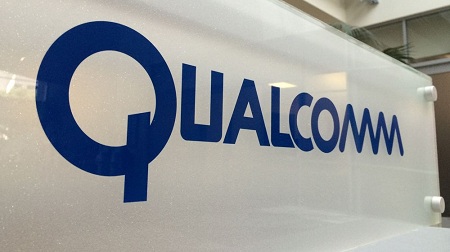Qualcomm Technologies, Inc., a subsidiary of Qualcomm Incorporated introduced its first-announced Cellular Vehicle-to-Everything (C-V2X) commercial solution based on 3rd Generation Partnership Project (3GPP) Release 14 specifications for PC5-based direct communications, the Qualcomm® C-V2X Reference Design, which will feature the 9150 C-V2X chipset with integrated GNSS capability, and include an application processor running the Intelligent Transportation Systems (ITS) V2X stack and a Hardware Security Module (HSM).
C-V2X’s overarching technologies encompass two transmission modes of direct communications and network-based communications, which are designed to serve as key features for safety conscious and autonomous driving solutions, while complementing other Advanced Driver Assistance Systems (ADAS) sensors, such as cameras, radar and LIDAR, to provide information about the vehicle’s surroundings, including non-line-of-sight (NLOS) scenarios. C-V2X direct communications is designed to support active safety and helps enhance situational awareness by detecting and exchanging information using low latency transmission in the globally harmonized 5.9 GHz ITS band for Vehicle-to-Vehicle (V2V), Vehicle-to-Infrastructure (V2I) and Vehicle-to-Pedestrian (V2P) scenarios without the need for a Subscriber Identity Module (SIM), cellular subscription or network assistance. Complementing direct communication transmissions, the network-based communications is designed to utilize the wireless operator’s 4G and emerging 5G wireless networks for Vehicle-to-Network (V2N) and operates over licensed operator spectrum to support telematics, connected infotainment and a growing variety of advanced informational safety use cases. The C-V2X standards include both the global 3GPP specifications at the radio layers and reuse the established service, and application layers, defined by the automotive industry, including the Society of Automotive Engineers (SAE) and European Telecommunications Standards Institute ITS (ETSI-ITS), who utilize investments made by the ITS community allowing for evolution of the upper layers to support new and enhanced capabilities.
Qualcomm Technologies has been engaged with the V2X ecosystem for years. With our IEEE 802.11p-based products and the new addition of the 9150 C-V2X chipset, Qualcomm Technologies’ commitment to supporting safety conscious, connected automotive transportation remains strong. The 9150 C-V2X chipset is designed to offer the industry enhanced V2X capabilities, including extended communication range, improved reliability and NLOS performance to expand support for safety and autonomous driving use cases. With a strong evolution path in 3GPP to 5G New Radio (NR), Qualcomm Technologies continues to invest in the C-V2X roadmap and in delivering new and complementary 5G-NR based C-V2X capabilities.
“Today’s introduction of the Qualcomm 9150 C-V2X chipset builds on our leadership in automotive technologies, demonstrating our continued commitment to design and offer advanced solutions for safe, connected and increasingly autonomous vehicles,†said Nakul Duggal, vice president of product management, Qualcomm Technologies, Inc. “With its strong synergy with telematics and an evolution towards 5G, C-V2X offers benefits to the automotive industry by developing new capabilities for improving road safety, and enhancing autonomous driving and advanced connected services, while building on the ITS momentum and investments made over the last decade. C-V2X is expected to support safer roads, increase productivity and decrease traffic congestion. We look forward to seeing our 9150 C-V2X chipset play a key role in assisting the global market to achieve these benefits.â€
As C-V2X continues to gain momentum, the automotive industry and broad ecosystem for the technology continues to grow and work together. Auto manufacturers continue to express their global support and commitment in helping drive the commercialization of the technology for enhanced safety, advanced services and new applications in next-generation vehicles.
“Qualcomm Technologies’ anticipated 9150 C-V2X chipset serves as a major milestone in paving the road for 5G and safer autonomous driving,†said Dr. Thomas Müller, head of electrics/electronics, Audi. “As C-V2X continues to serve as an essential ingredient for enhanced safety for next-generation vehicles, Qualcomm Technologies’ 9150 C-V2X chipset will certainly help accelerate the adoption and deployment of C-V2X technologies.â€
“Ford is committed to V2X communications and sees it as a critical technology to improve vehicle safety and efficiency,†said Don Butler, executive director, connected vehicle and services, Ford Motor Company. “We welcome Qualcomm Technologies’ cellular-V2X product announcement, as the automotive industry and ecosystem work towards C-V2X implementation, and pave the path to 5G broadband and future operating services.â€
“We are pleased to see Câ€V2X gaining momentum and broad ecosystem support, and how Qualcomm Technologies has helped the automotive industry make great strides in bringing this to fruition, including the announcement of the 9150 C-V2X chipset,†said Carla Gohin, senior vice president, head of innovation, Groupe PSA. “Groupe PSA is strongly involved in the 5G standardization and trials and has great expectations on 5G as an enabler for the connected and autonomous vehicles. Câ€V2X and its strong evolution path to 5G will serve as a key enabler for new mobility services. Groupe PSA will evaluate this technology, with Qualcomm Technologies’ support, to adopt for our cars.â€
“SAIC has always attached great importance to the development and application of new technologies. It is actively promoting the commercialization of new energy vehicles and internet-connected vehicles, and the development of autonomous vehicles. As vehicles become increasingly intelligent, it’s critical that our vehicles are equipped with premium-tier technologies to provide seamless communication between the vehicle and the roadway and beyond,†said Dr. Liu Fen, director of intelligent driving, research and advanced technology department, SAIC. “We deem C-V2X technologies as the best choice, and look forward to utilizing these technologies in V2X. We admire the efforts Qualcomm Technologies has made and believe that the planned commercialization of their 9150 C-V2X chipset will accelerate the development of next-generation intelligent and connected vehicles.â€
About Audi
The Audi Group, with its brands Audi, Ducati and Lamborghini, is one of the most successful manufacturers of automobiles and motorcycles in the premium segment. It is present in more than 100 markets worldwide and produces at 16 locations in twelve countries. 100 percent subsidiaries of AUDI AG include Audi Sport GmbH (Neckarsulm), Automobili Lamborghini S.p.A. (Sant’Agata Bolognese, Italy) and Ducati Motor Holding S.p.A. (Bologna, Italy).
In 2016, the Audi Group delivered to customers about 1.868 million automobiles of the Audi brand, 3,457 sports cars of the Lamborghini brand and 55,451 motorcycles of the Ducati brand. In the 2016 fiscal year, AUDI AG achieved total revenue of €59.3 billion and an operating profit of €3.1 billion. At present, approximately 88,000 people work for the company all over the world, more than 60,000 of them in Germany. Audi focuses on sustainable products and technologies for the future of mobility.
www.audi-mediacenter.com/en
About Ford Motor Company
Ford Motor Company is a global company based in Dearborn, Michigan. The company designs, manufacturers, markets and services a full line of Ford cars, trucks, SUVs, electrified vehicles and Lincoln luxury vehicles, provides financial services through Ford Motor Credit Company and is pursuing leadership positions in electrification, autonomous vehicles and mobility solutions. Ford employs approximately 203,000 people worldwide. For more information regarding Ford, its products and Ford Motor Credit Company, please visit www.corporate.ford.com.
About Groupe PSA
With sales and revenue of €54 billion in 2015, the PSA Group designs unique automotive experiences and delivers mobility solutions that provide freedom and enjoyment to customers around the world. The Group leverages the models from its three brands, Peugeot, Citroën and DS, as well as a wide array of mobility and smart services from its Free2Move brand, to meet the evolving needs and expectations of automobile users. PSA Group is the European leader in terms of CO2 emissions, with average emissions of 102.4 grams of CO2 per kilometer in 2016, and an early innovator in the field of autonomous and connected cars, with 1.8 million such vehicles worldwide. It is also involved in financing activities through Banque PSA Finance and in automotive equipment via Faurecia. Find out more at groupe-psa.com/en. New media library: https://medialibrary.groupe-psa.com/
About Qualcomm
Qualcomm’s technologies powered the smartphone revolution and connected billions of people. We pioneered 3G and 4G – and now, we are leading the way to 5G and a new era of intelligent, connected devices. Our products are revolutionizing industries including automotive, computing, IoT and healthcare, and are allowing millions of devices to connect with each other in ways never before imagined. Qualcomm Incorporated includes our licensing business, QTL, and the vast majority of our patent portfolio. Qualcomm Technologies, Inc., a subsidiary of Qualcomm Incorporated, operates, along with its subsidiaries, all of our engineering, research and development functions, and all of our products and services businesses, including our semiconductor business, QCT, and our mobile, automotive, computing, IoT and healthcare businesses. To learn more, visit Qualcomm’s website, blog, Twitter and Facebook pages.
About SAIC Motor
SAIC Motor Corporation Limited (SAIC Motor) is the largest auto company on China’s A-share market (Stock Code: 600104), and has a total equity of 11.683 billion shares. SAIC Motor strives to grasp the trend of industrial development and speeds up the innovation-driven industrial transformation, and it is growing into a full-range vehicle products and services provider from traditional manufacturing enterprises. SAIC Motor’s business covers the research, production and vehicle sales of both passenger cars and commercial vehicles. The company is actively promoting new energy vehicles, the commercialization of internet-connected cars and is exploring intelligent driving technology research and industrialization of exploration. It is mainly engaged in the R&D, production and sales of parts for motor drive system, chassis system, interior and exterior decoration, battery, electric drive, power electronics and other new energy vehicles, and the core components of the intelligent product system, as well as auto-related services such as logistics, e-commerce, travel, energy-saving and charging service; auto-related finance, insurance and investment services; overseas business and international trade; and the layout of industries of big data and artificial intelligence. SAIC’s affiliated vehicle companies include Morris Garages, SAIC MAXUS, SAIC Volkswagen, SAIC-GM, Shanghai General Motors Wuling (SGMW), NAVECO, SAIC-IVECO Hongyan and Shanghai Sunwin Bus Corp (SUNWIN). SAIC Motor’s car sales hit 6.489 million units in 2016, up 9.95 percent on the previous year and keeping its leading market share in China. In 2016, the company climbed 5 places to rank 41th on the annual Fortune Global 500 list, thanks to its $113.86 billion in revenues. It marked the 13th time that the company had made it onto the list of Fortune magazine’s 2016 Global 500.

































